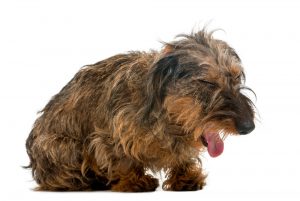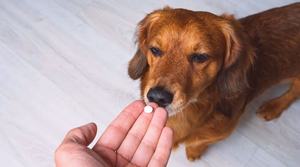
Reviewed & Fact-Checked by
Dr. Paula Simons
Veterinarian (DVM)
Learn more about our Veterinary Review Board »
Is your dog losing her hair? Suddenly gaining weight? Acting lazier than usual? While it’s true that some dogs have a genetic predisposition to become hypothyroid, it can still be difficult to accurately diagnose canine hypothyroidism.
Learn what causes it and recognize its symptoms to prevent misdiagnosis.
Once diagnosed the common treatment for hypothyroidism is supplementation of thyroid hormone. In this article we take a close look at hypothyroidism in dogs including - causes, signs and treatment.
What is Canine Hypothyroidism?
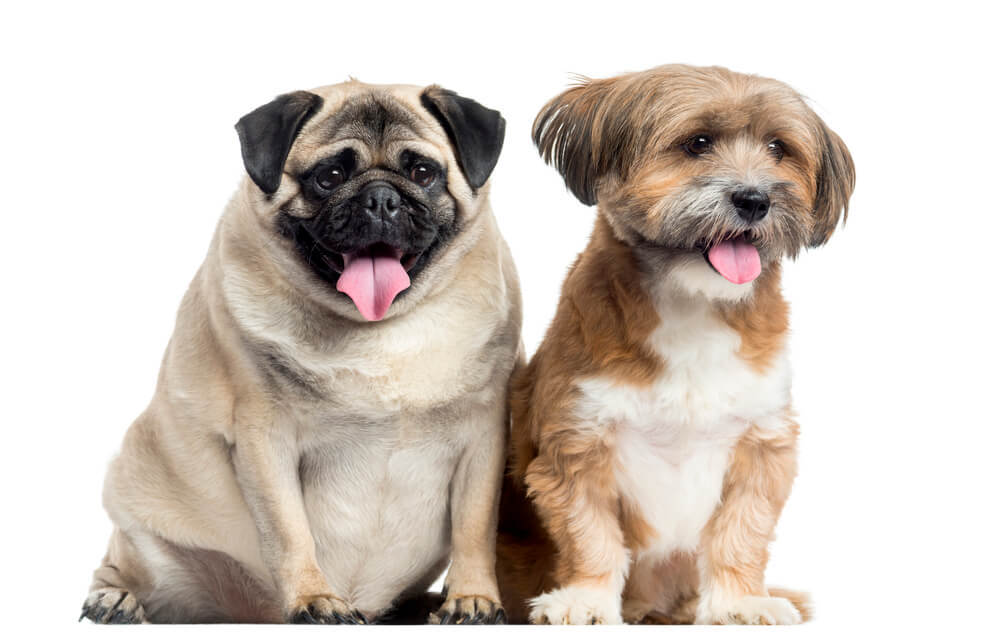
Weight gain without increased appetite is a common clinical finding in hypothyroid dogs.
Just like humans, dogs have thyroid glands located in their neck. While the thyroid has a number of functions, one of the main functions is to create and secrete a hormone called thyroxine that controls a dog's metabolism.
Hypothyroidism occurs when the thyroid decreases the amount of thyroxine it secretes into a pup's system. This lack of what is an essential hormone then goes on to affect a number of areas of the body and its functions.
Hypothyroidism should not be confused with hyperthyroidism.
Hyperthyroidism is a disease in which the thyroid gland is overactive, so it is the exact opposite. While common in cats it is rarely seen in dogs.
What Causes a Dog To Have an Underactive Thyroid?
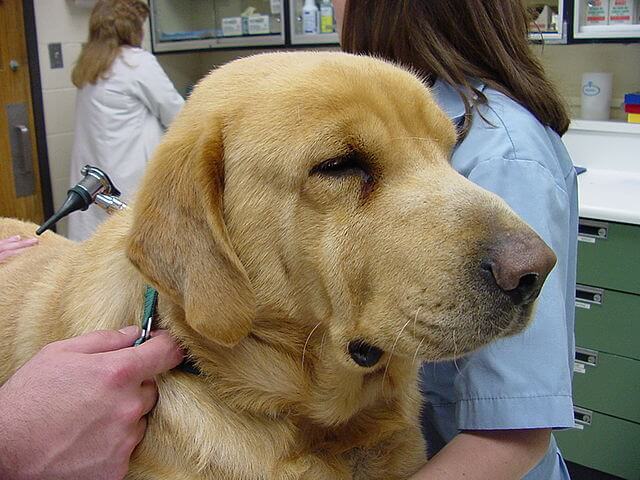
Example of "Tragic Face" in Hypothyroid Dogs. Image Credits: self [CC BY-SA 3.0], via Wikimedia Commons
As the condition usually occurs in dogs aged four to ten years, with an average age at diagnosis of seven years, related shrinkage of the thyroid gland may be to blame, a decrease in the hormones produced by the thyroid gland or for some reason their own immune system may be attacking the thyroid which is the most common cause.
In rare cases hypothyroidism may be caused by a tumor on the thyroid gland itself.
Canine hyperthyroidism is also a genetic-prone disease. Dr. Diane Levitan, DVM, DACVIM, from Peace Love Pets Veterinary Care writes,
“Hypothyroidism is a difficult disease because it does manifest itself in several different ways. One of the most important things to understand about hypothyroid[ism] is that there is a genetic predisposition".
What Dog Breeds are Prone to Hyperthyroidism?
Any dog can develop hypothyroidism but extensive research, and anecdotal evidence seems to indicate that larger breeds and certain purebred dogs are more prone to developing the disease.
These include:
- Golden Retrievers
- Irish Setters
- Doberman Pinschers
- Boxers
- Cocker Spaniels
- Dachshunds
The genetic correlation is not something that experts currently fully understand and no genetic link has been discovered at this time. Studies also show hypothyroidism is more prevalent in spayed females than in males.
Since there is not a DNA-based test to determine for hypothyroidism, dogs can be screened from an early age using a blood test, but this is not necessary in healthy animals.
How Can I Tell If My Dog Has Hypothyroidism?

Common symptoms include cold intolerance
Whatever the cause of hypothyroidism, the symptoms and eventual treatments are the same. The earliest signs that you can usually observe in a dog with hypothyroidism affect the skin, coat and its weight.
The coat dulls and skin will become flaky. Dogs may also begin to lose hair, usually from the back and hind quarters. These signs are sometimes mistaken for allergies, they are good indications that your pup should visit the vet for further testing.
As the lack of thyroxine in your pup's system continues to affect them, they may lose their appetite. Despite a decreased appetite you may appreciate weight gain.
Dogs may become sluggish and begin to lose muscle tone as well.
Some dogs will also develop black patches on their skin, especially in the groin and armpits and suddenly become very intolerant to cold.
Their heart rate may slow and they may become more prone to ear and toenail funguses too.
Low thyroid levels can also lead to:
- Vomiting
- Diarrhea
- An increase in ear infections
- Increased urination
- Reproductive issues
- Tragic facial expression (i.e. droopy eyes and thickening of the skin mostly on the forehead and face)
- A slow heart rate known as bradycardia
- A sudden onset of seizures
If you notice your dog displaying any of these symptoms it is best to get them checked by a vet right away.
How Is Hypothyroidism Diagnosed in Dogs?
If you suspect that your dog has a low thyroid your vet will perform a series of tests to confirm whether or not that is the case.
These tests are usually limited to a series of blood tests in addition to a full physical examination. Some vets may also choose to order imaging tests to ensure that a tumor is not present, which occurs in a very small number of dogs diagnosed with hypothyroidism.
Blood testing is usually very accurate and in addition to confirming the diagnosis, will also give your vet vital information they will need to treat the condition properly.
How is Canine Hypothyroidism Treated?
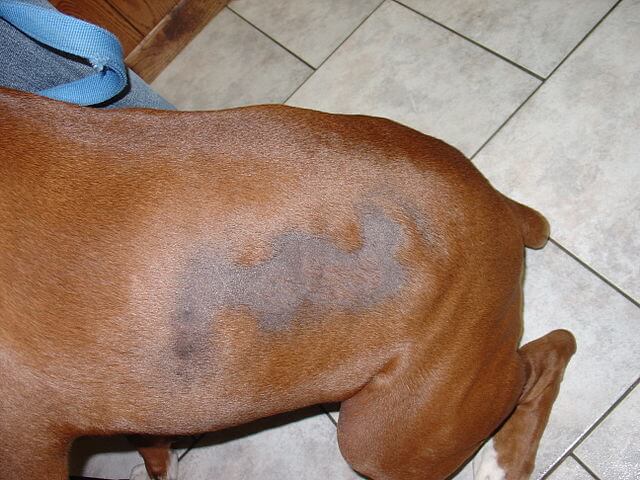
Hair thinning or hair loss is a common sign of hypothyroidism in dogs. Image Credits: Joel Mills [CC BY-SA 3.0], via Wikimedia Commons
The standard treatment for this disease is with medication and it is a treatment that a pup will have to follow for the remainder of their life.
The most commonly prescribed drug for this treatment is one called levothyroxine or L-thyroxine and it serves to replace and replenish the supply of thyroxine in your dog's system that the thyroid gland is no longer producing.
The precise drug dosage needed to treat a dog's hypothyroidism will be set by their veterinarian according to a number of different factors including age, weight and any remaining natural thyroid function that your pup may have.
On an ongoing basis the drug can then be obtained from any pet pharmacy and is usually provided in tablet form.
Most pet parents do find that it is easier to crush the tablet into food once their pups appetite returns, but if you decide to do that it is crucial that you make sure that they are consuming the full dose every time.
Recovery
The good news for any pet parent whose furkid is diagnosed with hypothyroidism is that despite the fact that there is no cure and it is a life long condition, these dogs can maintain long, happy lives.
It is important that the condition be treated though, as left untreated it will seriously impact your dog's quality of life.


